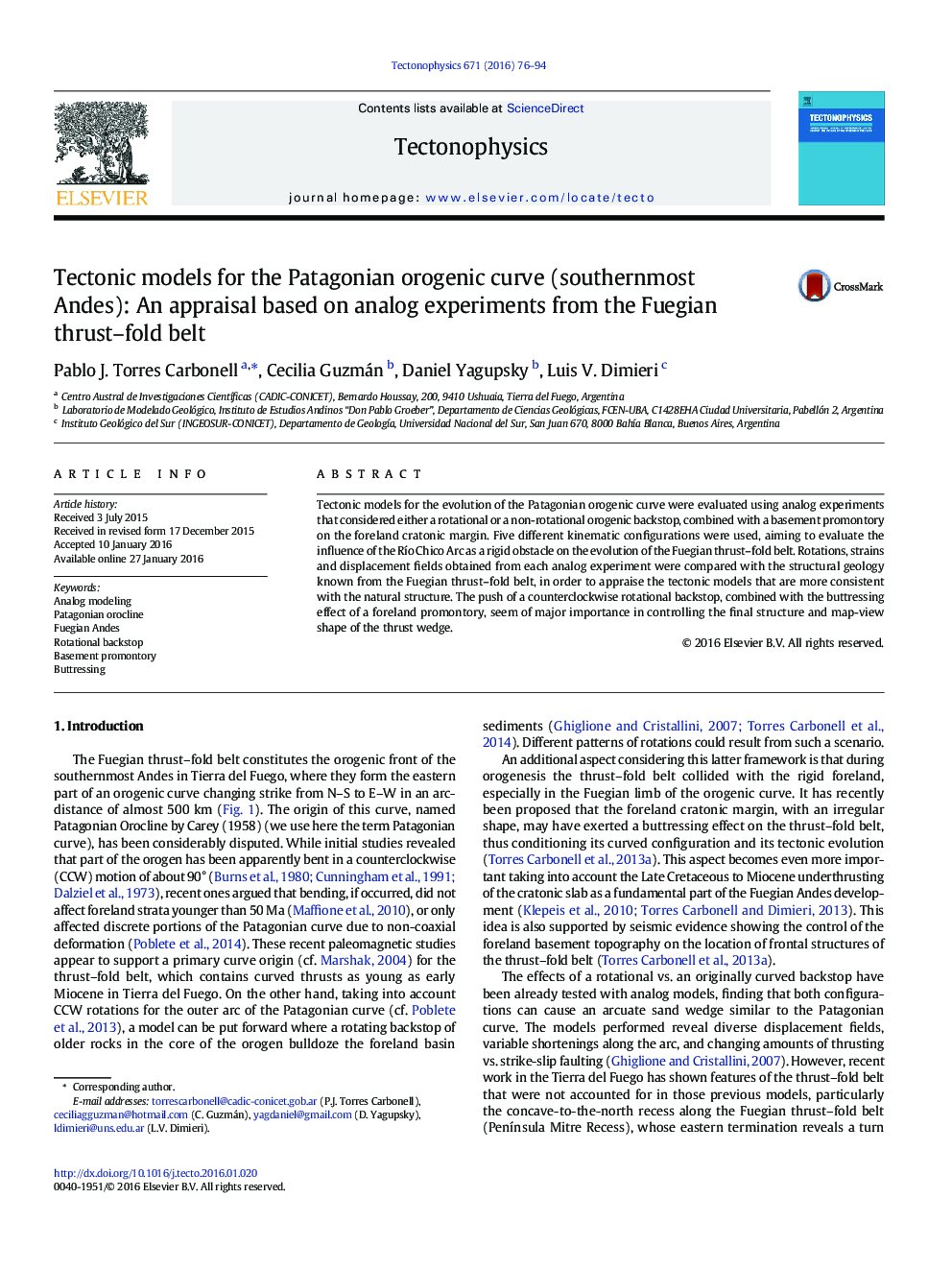| Article ID | Journal | Published Year | Pages | File Type |
|---|---|---|---|---|
| 4691326 | Tectonophysics | 2016 | 19 Pages |
•Tectonic models of the Patagonian curve were tested with analog experiments.•Results were compared with structural data from the Fuegian thrust–fold belt.•A rotational backstop and rigid obstacle better reproduce the natural thrust wedge.
Tectonic models for the evolution of the Patagonian orogenic curve were evaluated using analog experiments that considered either a rotational or a non-rotational orogenic backstop, combined with a basement promontory on the foreland cratonic margin. Five different kinematic configurations were used, aiming to evaluate the influence of the Río Chico Arc as a rigid obstacle on the evolution of the Fuegian thrust–fold belt. Rotations, strains and displacement fields obtained from each analog experiment were compared with the structural geology known from the Fuegian thrust–fold belt, in order to appraise the tectonic models that are more consistent with the natural structure. The push of a counterclockwise rotational backstop, combined with the buttressing effect of a foreland promontory, seem of major importance in controlling the final structure and map-view shape of the thrust wedge.
